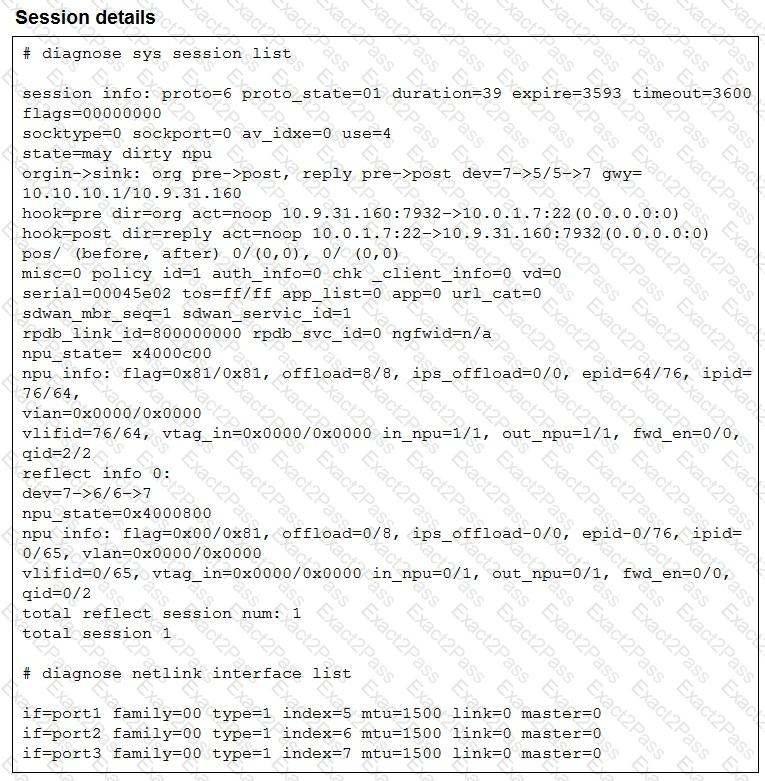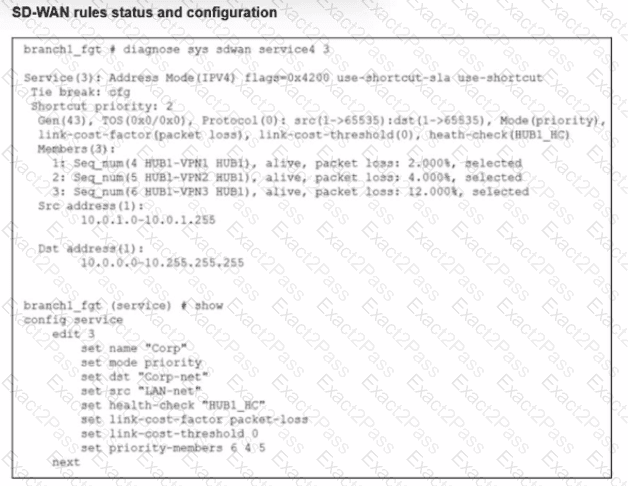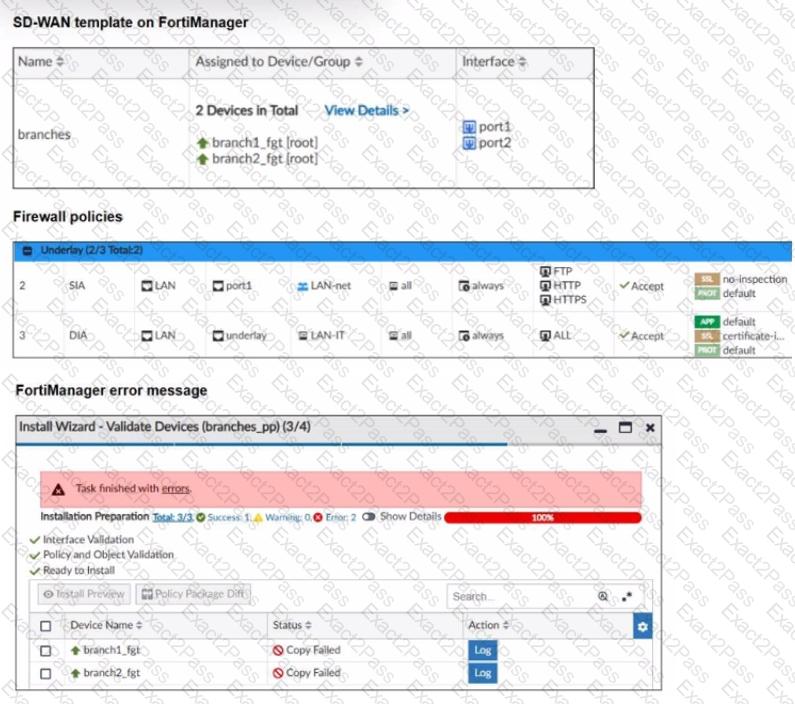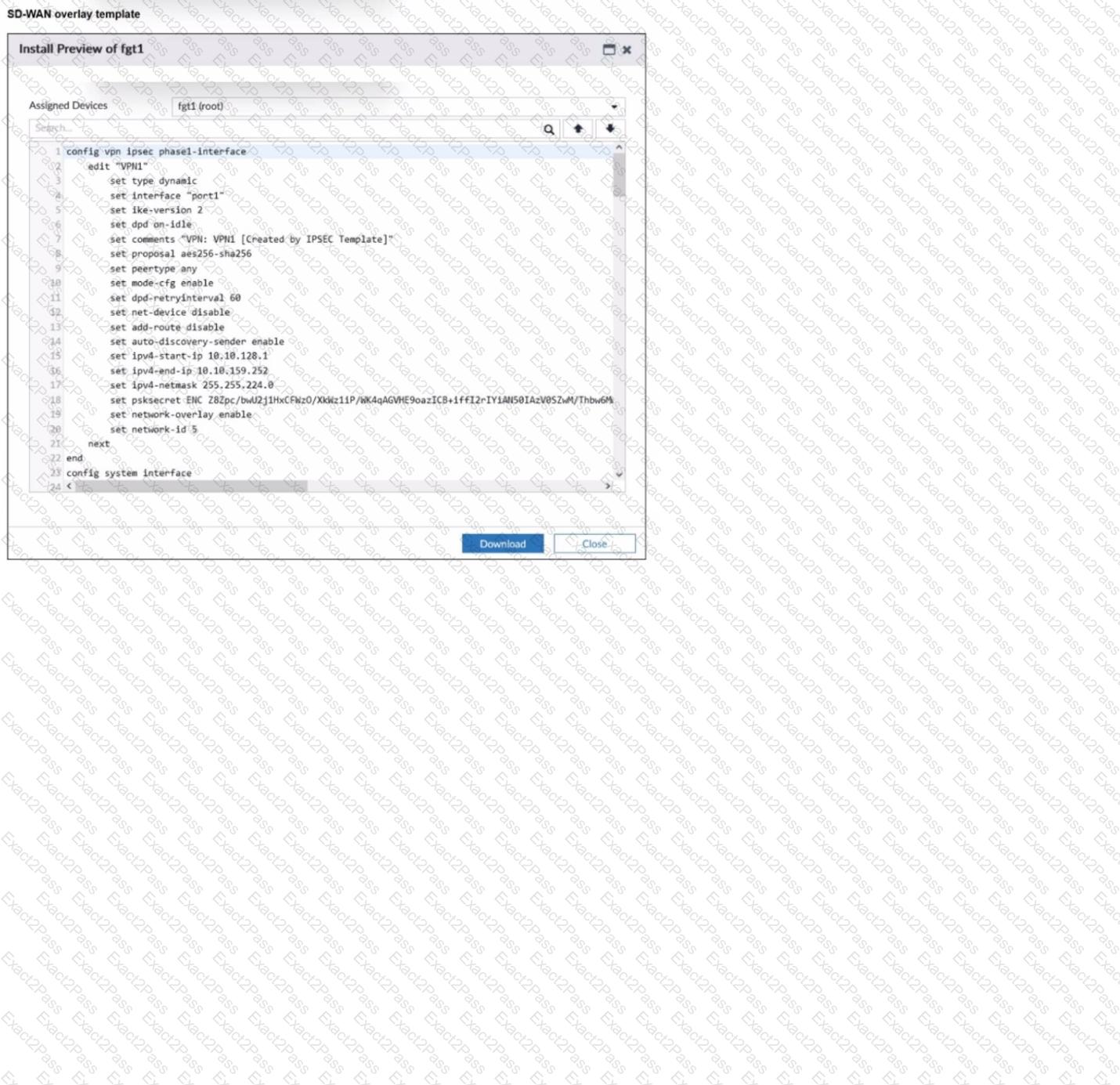Last Update 2 hours ago Total Questions : 68
The FCSS - SD-WAN 7.4 Architect content is now fully updated, with all current exam questions added 2 hours ago. Deciding to include FCSS_SDW_AR-7.4 practice exam questions in your study plan goes far beyond basic test preparation.
You'll find that our FCSS_SDW_AR-7.4 exam questions frequently feature detailed scenarios and practical problem-solving exercises that directly mirror industry challenges. Engaging with these FCSS_SDW_AR-7.4 sample sets allows you to effectively manage your time and pace yourself, giving you the ability to finish any FCSS - SD-WAN 7.4 Architect practice test comfortably within the allotted time.
Refer to the exhibit.

Which statement best describe the role of the ADVPN device in handling traffic?
Refer to the exhibit.

The exhibit shows the details of a session and the index numbers of some relevant interfaces on a FortiGate device that supports hardware offloading.
Based on the information shown in the exhibits, which two conclusions can you draw? (Choose two.)
As an IT manager for a healthcare company, you want to delegate the installation and management of your SD-WAN deployment to a managed security service provider (MSSP). Each site must maintain direct internet access and ensure that it is secure. You expected significant traffic flow between the sites and want to delegate as much of the network administration and management as possible to the MSSP.
Which two MSSP deployment blueprints best address the customer’s requirements? (Choose two.)
Which statement describes FortiGate behavior when you reference a zone in a static route?
Exhibit.

Refer to the exhibit, which shows the SD-WAN rule status and configuration.
Based on the exhibit, which change in the measured packet loss will make HUB1-VPN3 the new preferred member?
Refer to the exhibits.

You use FortiManager to manage the branch devices and configure the SD-WAN template. You have configured direct internet access (DIA) for the IT department users. Now. you must configure secure internet access (SIA) for all local LAN users and have set the firewall policies as shown in the second exhibit.
Then, when you use the install wizard to install the configuration and the policy package on the branch devices, FortiManager reports an error as shown in the third exhibit.
Which statement describes why FortiManager could not install the configuration on the branches?
Refer to the exhibit.

The administrator used the SD-WAN overlay template to prepare an IPsec tunnels configuration for a hub-and-spoke SD-WAN topology. The exhibit shows the FortiManager installation preview for one FortiGate device.
Based on the exhibit, which statement best describes the configuration applied to the FortiGate device?

